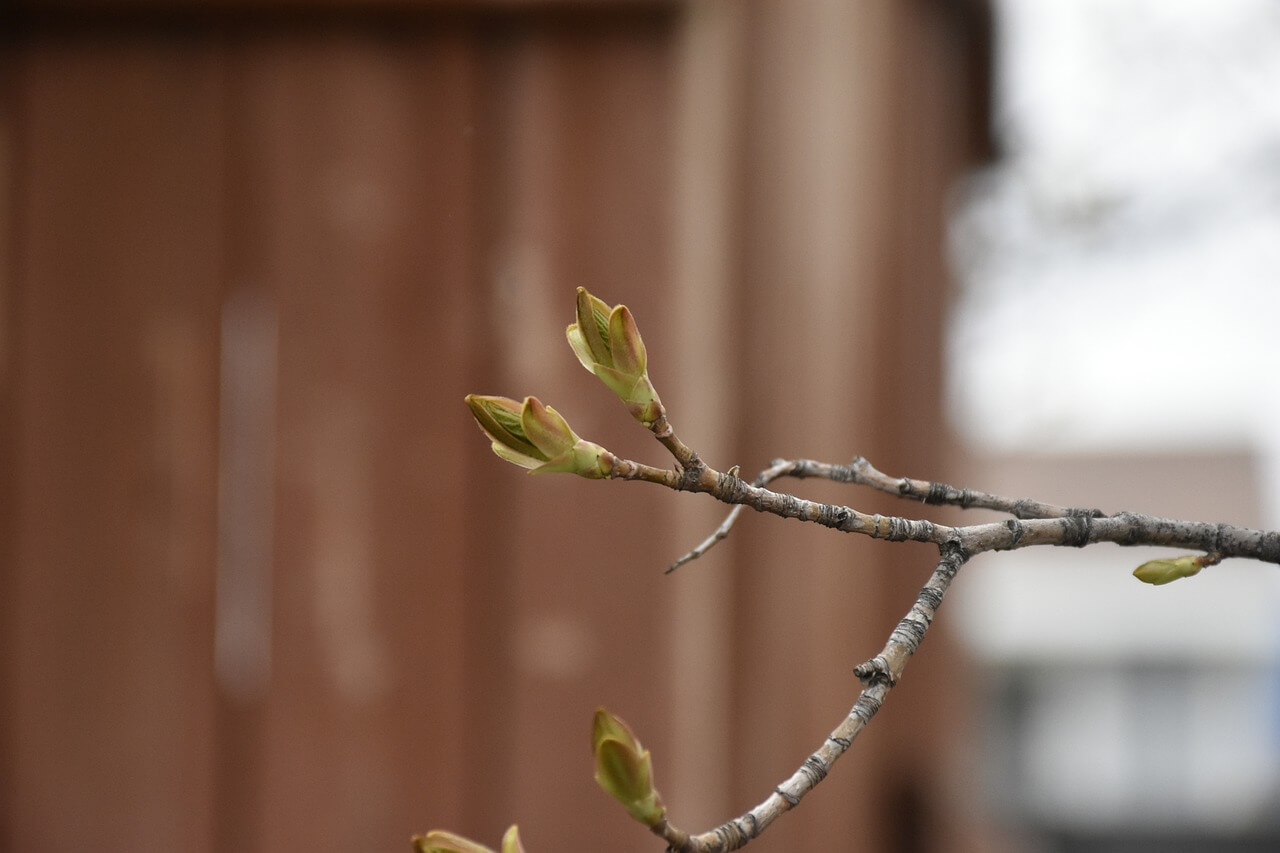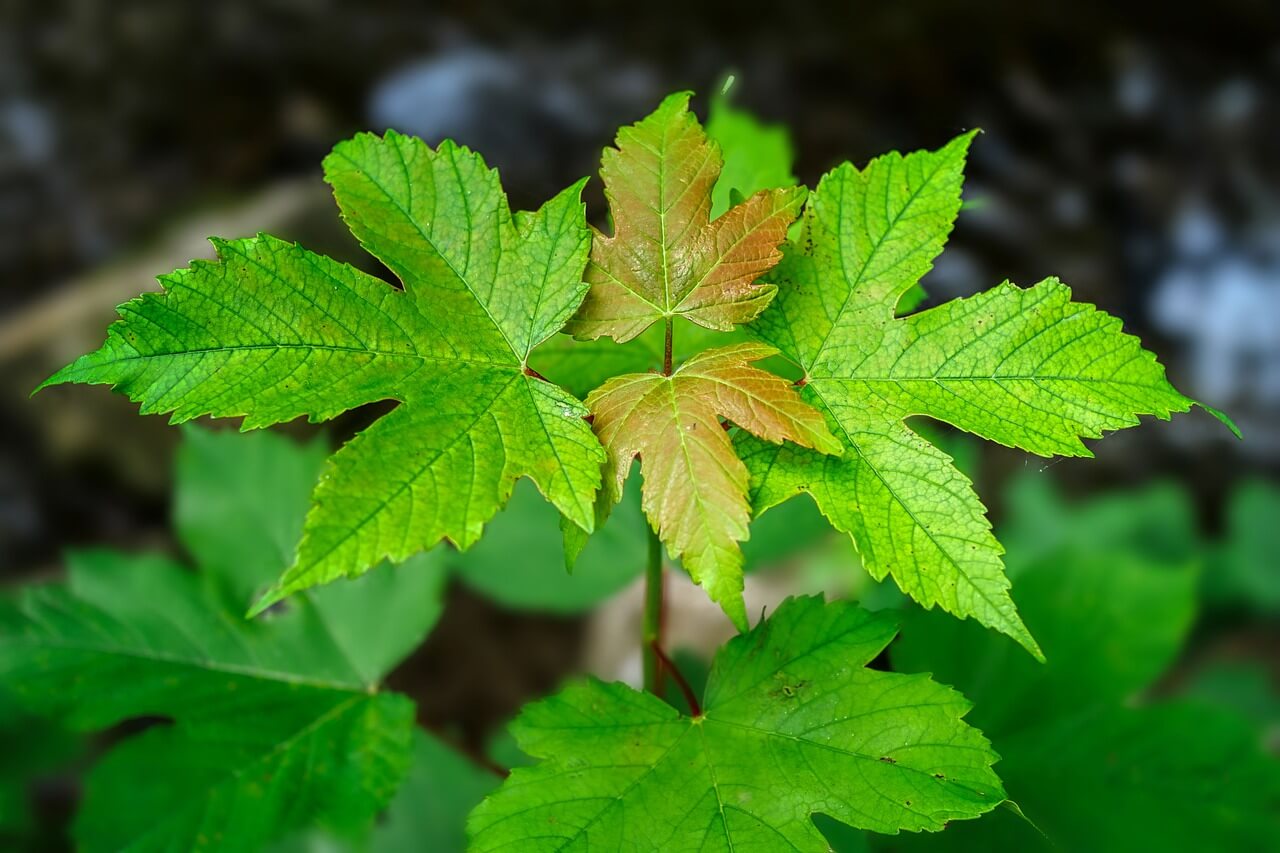Proper pruning is important for removing problem branches and helping young trees grow strong and shapely. So how do you prune a maple tree? Keep reading to find out.
What You'll Learn Today
When to Prune a Maple Tree

There are disagreements as to when is the best time to prune a maple tree.
Generally, deciduous trees are pruned during late winter and early spring, before the buds or flowers have begun to open. Some people prune their maples during this season as well.
The problem is that maple trees are producing the greatest amount of sap during late winter and early spring. The sap is under pressure inside the wood, so any cut in the wood at this time of year is going to release copious amounts of sap.
While this generally won’t hurt older trees, younger trees may be stunted by the loss of so much sap. For this reason, many people prefer to prune their maple trees in late spring or summer, after the sap has stopped flowing.
The trouble with pruning later in the year is that it may be harder to see which branches should be removed once the tree has leafed out. You may want to try pruning in different seasons to see what works best for you and your trees.
Regardless of the time of year, it’s a good idea to prune away dead or diseased branches as soon as possible.
How to Prune a Young Maple Tree

Maple trees should not be pruned before they are three years old, as young saplings are still soft and prone to damage. Before pruning your trees, you’ll want to gather a few items:
- Pruning shears
- Loppers
- Pruning pole
- Saw
- Work gloves
- Ladder
You may not need all four of the cutting items listed above, but it will depend on the size of your tree and, more specifically, the sizes of the branches.
Use a pruning pole, chainsaw, or pruning saw for branches larger than 2 or 3 inches in diameter. Loppers work well for branches up to 3 inches, while hand held pruning shears are best for small branches less than ½ an inch.
To prune the tree:
- First, remove all dead, decaying, damaged, and diseased branches. Again, this can be done at any time of the year and should be done as soon as possible.
If you can, remove not only the dead or decayed branch but also 6 inches of the branch behind it. You may also want to remove some of the smaller branches and twigs to keep them from rubbing against the prune wound.
- Next, cut away any branches that are crossing each other or fighting for space. Always cut away the smaller, less healthy branches so the tree’s energy will be redirected to growing the larger branches.
- Remove low-growing branches, including even the smallest branches growing near the base of the trunk. This will help the tree develop a strong, straight trunk as it grows.
- Remove any branches growing down, inward, or at other odd angles.
- Remove smaller, weaker branches from any part of the tree that has developed unusually narrow angles.
- If a tree has two or more “leaders,” or branches growing straight up from the middle, prune away all but the strongest one.
- Remove any branches that seem to be growing faster than the rest of the tree.
While it may seem like there are a lot of branches that need pruning, be careful not to cut away too much of the tree at one time. The University of Missouri Extension warns that over pruning can weaken the tree, leaving it susceptible to disease and damage.
How to Prune a Mature Maple Tree
Most mature maple trees are quite tall, sometimes up to 120 feet. If you have a large mature tree that needs pruning, it’s best to call a professional tree service to do the work for you, as you risk injury or damage to the tree if you do it yourself.
If your mature tree is a bit smaller or you have more experience with pruning, you may be able to do the job on your own. Before starting, you might want to watch a tutorial video like the one below.
Let’s take a look at a few tips for pruning a mature tree if you decide to do it on your own:
- Only remove what needs to be removed, such as dead or diseased branches or branches that are too low to the ground.
- Start at the top and work your way down, as this tends to reduce the risk of over pruning.
- Don’t thin out smaller branches unless they are dead, rotting, diseased, or smothering larger branches.
- Mature trees don’t heal as well and don’t have the same nutrient reserves as young trees, so pruning generally becomes harder on the tree the older it gets. This is why you should never remove more than you need to from a mature tree.
- You don’t need to prune mature trees on a regular schedule. Instead, only prune them when you notice branches that pose a threat or need to be removed.
Can You Cut the Top off a Maple Tree?

Tree topping is a fairly common practice that involves cutting back all of a tree’s main branches and removing all of the smaller branches – essentially “taking the top off” of a tree. Some homeowners do this to prevent large trees from damaging their home or growing into power lines.
Can you top a maple tree? Technically, the answer is yes, but topping trees in general is greatly discouraged by most professional arborists.
Topping trees leaves large cut wounds on mature trees. These wounds are slow to heal over and may leave the tree more susceptible to disease, rot, storm damage, and sun scald.
Sun scald, in particular, is a major risk even if the tree remains relatively healthy after being topped. Because all of the small branches are removed, the trunk and major branches are left exposed to full sunlight, which may kill the bark and harm the wood underneath.
Instead of having your maple tree topped, consider an alternate pruning method known as crown reduction, or drop-crotch pruning. This method allows you to shape and thin the tree by cutting back problem branches to the trunk or nearest branch, and it causes less stress on the tree.
Conclusion
Pruning young maple trees has many benefits. If done correctly, it will help your trees grow straight and strong as well as guard against future tree problems.
If you need to prune a mature maple, make sure you only remove what is necessary to remove. Never have your tree topped, as this can weaken the tree and cause it to become a threat to surrounding structures.
last May,my lawn man hit my three year old red maple that cut a 3X3 inch chunk out of the barknear the bottom of the 3inch round trunk. within the next 3 months, One branch died and I removed it.we had much rain between then and July, at which time I noticed another branch dying and removed it. the tree has put on very few new leaves this year and despite fertilizing and plenty of water,it just is not thriving at all. I’m beginning to think it is not salvageable. It is now September and I’m thinking of pruning it back quite a bit. any suggestions? brown thumber.
My red maple tree is around 9 years old. What I would like to know is: Do I have to remove the full branch or can I ‘shorten’ the ones that are in the way. There are a couple of branches that intrude on my parking area and a bit into the ‘road’ basically a long driveway.
I really hate to do anything because this year as he is a really nice ‘Fatty’ around 30′ tall and really has a lot of super leafy branches. Looks really healthy. I even got one of it’s seeds to grow a couple of weeks ago.